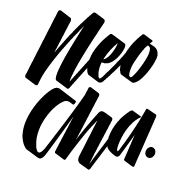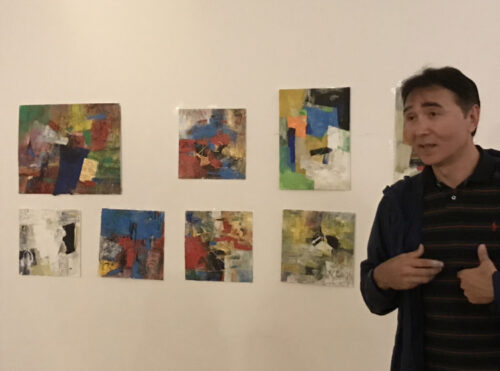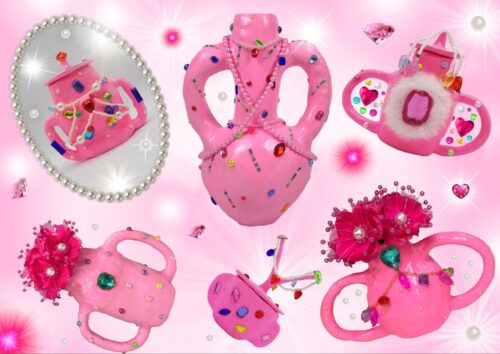Tagging along
A brief history of Chinese-language graffiti
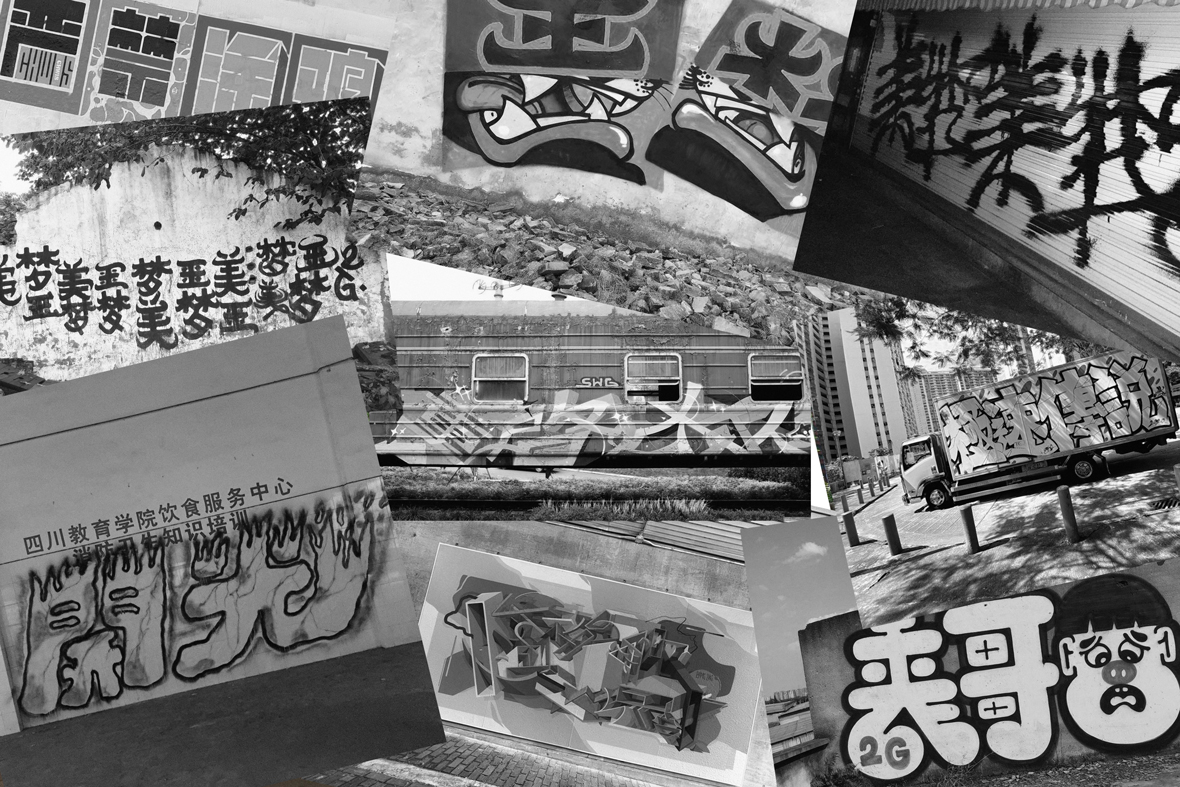
This article was originally published on Neocha and is republished with permission.
Chinese culture has considered the written letter fundamental to the arts since ancient times. There are billions of people across the world able to read Chinese characters. Manga and anime have brought kanji lettering to a global audience for 40 years. Graffiti has had a foothold in Asia for over 20 years. So where is all the Chinese-language graffiti? It’s still a frustratingly rare occurrence despite all these facts. But there is a new crop of artists taking advantage of missed opportunities and exploring the wealth of creative options from these overlaps. From mainland China, Hong Kong, and Taiwan, to Thailand, Europe, and Peru, these artists have a diverse range of backgrounds, outlooks, and styles.


Two of the major crews with writers using Chinese graffiti are Yellow Peril and SinoGhetto. Yellow Peril was started in China with the goal of pushing graffiti written in different Asian languages and includes members from across the world. SinoGhetto was founded by a European writer, and welcomes members from all over the spectrum, as long as they have love for Chinese and hip hop culture. In Hong Kong, writers like Boms and Sicko are dedicated to bombing in Chinese, and in Taiwan artists such as Chwis and Candy Lien focus more on blending street art with Chinese type design. Writers like Guangzhou’s Chan13 paint huge graffiti murals and push internationally recognized crews like BAMC and ZNC. In Japan, Serik and Veryone work in kanji, which are Chinese characters that have made it into the Japanese written language. Even European graffiti artists with no connection to Asia, such as Debz and Marx, also create interesting work with kanji lettering. Nobody knows exactly how many writers there are, but it’s likely less than 100 all together worldwide.
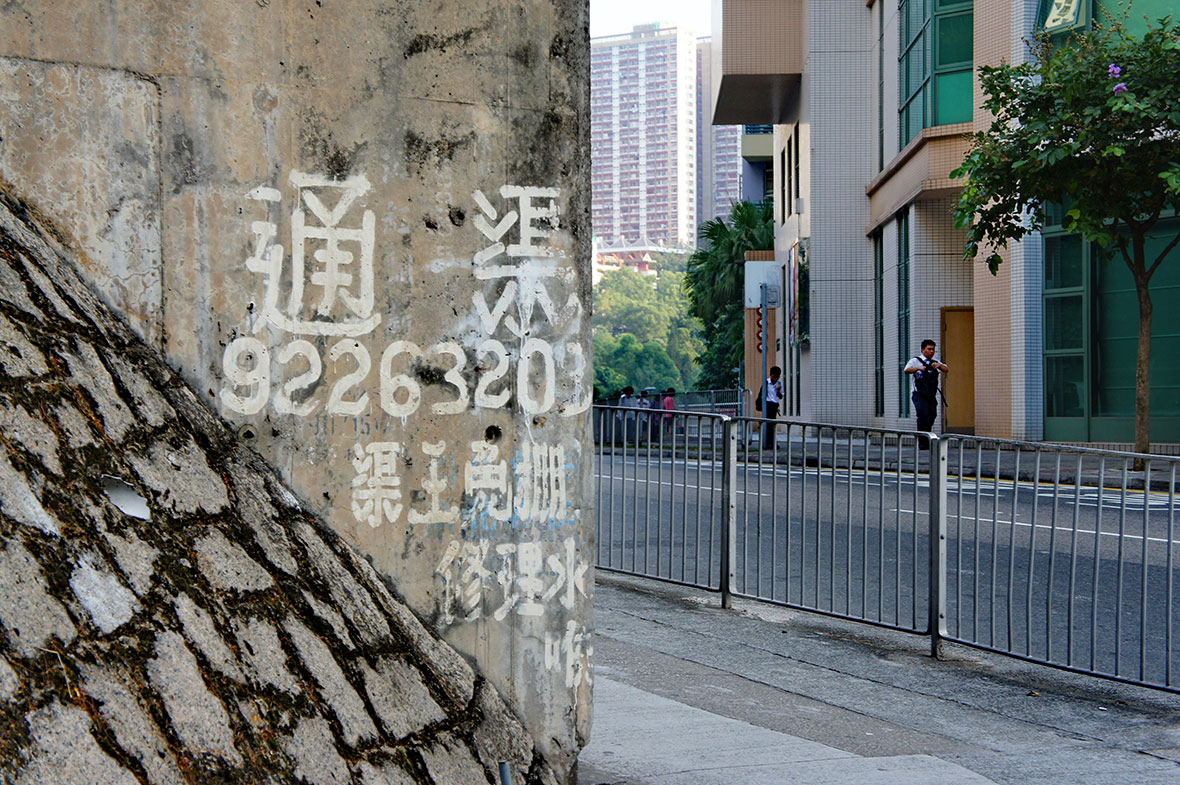


Some of the earliest graffiti written in Chinese comes from Hong Kong, and MC Yan might be one of the first writers to be inspired by hip-hop graffiti culture. After a trip to France in 1997 exposed him to graffiti, he brought it home with him and helped spark a movement. “I have been doing tags over the last 20 years and using Chinese characters has always been my style,” he noted in a past interview. “My three references are from traditional Chinese calligraphy, which is a beautiful art form on its own, adding on modernized typography – and my own creation which is about using Chinese characters inversely.” But there were local writers from entirely different traditions who he says paved the way for him—namely the late “King Of Kowloon” Tsang Tsou-choi, who wrote poetry in the street, and the “Plumber King” Yim Chiu-tong, who advertised his plumbing services on every square inch of the city.
In mainland China, earlier forms of Chinese-language “graffiti” were similarly cheap, guerrilla advertising, which promoted shady services with phone numbers stenciled on walls. “It’s all over here,” says Exas, a cofounder of Yellow Peril and graffiti artist who was born and raised in Beijing. “That type of graffiti is the most famous type of graffiti advertisement. It’s so profitable that there’s a lot of people in every city doing the same thing.” He adds that a lot of graffiti writers and designers now look to this work for inspiration, although none of the advertisers themselves have received recognition, except maybe in the form of patronage of their services.

Another popular form of Chinese graffiti outside the New York realm of influence are the candid confessions of everyday people leaving anonymous messages across the mainland, as documented by the Chinese Graffiti Hub blog. “In this era of instant gratification, people may be in need of more forthright ways of communicating,” reasons Lil Quacky, who runs the blog, of the style’s popularity. “This infotech age makes the simple prose of these graffiti shorthands that much more valuable.”
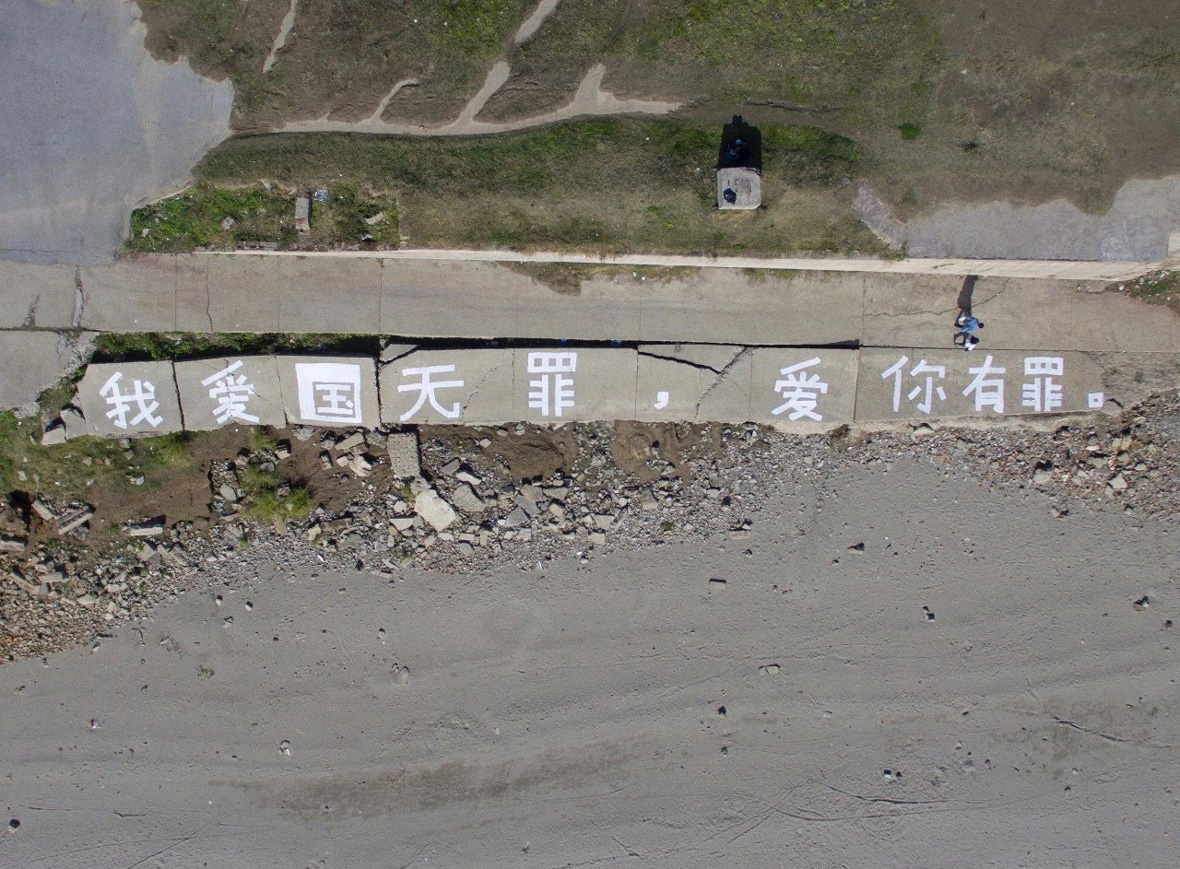
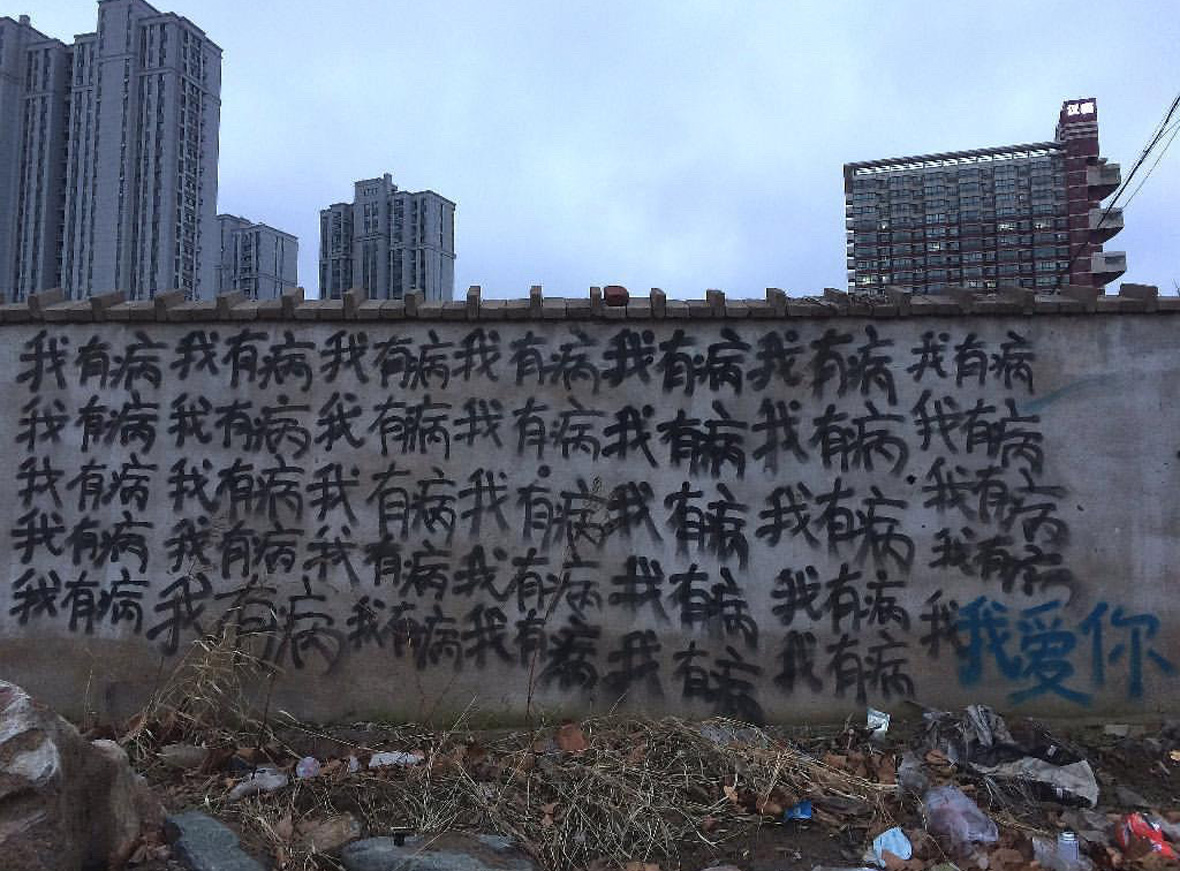
Reset is one of the most active writers in Chengdu writing in Chinese. He started getting up in 2015 but didn’t start using Chinese until 2017. He says one of his big inspirations is Gas, an influential Chengdu writer who started using Chinese characters in the mid-2000s. There are many new writers in the city these days, and Reset has noticed a lot of them are using Chinese. “Chengdu is a city that’s inclusive of different cultures, I suppose that’s a perk,” he says. “The more people getting involved, the more possibilities there are. It’s fun to see and come up with new ideas.” Reset switches his style up between a few different forms. When he takes his time, his pieces are often jumbles of blocky shapes with sharply divided colors. For his more simple pieces, he switches between wormy, curved characters, and straightforward, advertorial ones.
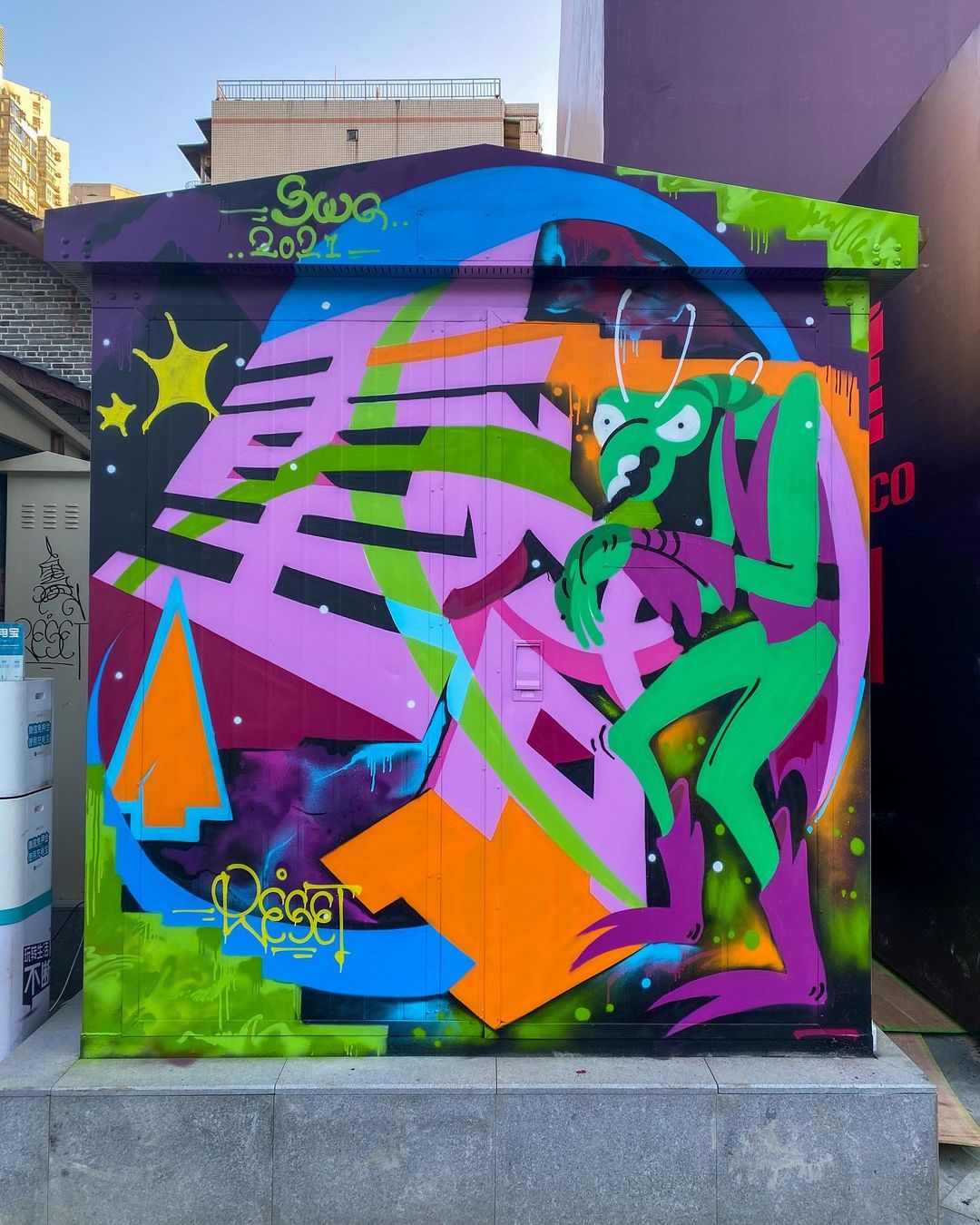


Many of the writers using Chinese characters are fond of “antistyle,” although most wouldn’t categorize themselves as such. Antistyle is a loose, catch-all term for a recent form of graffiti that purposely dispenses with traditional values of can control, color schemes, and details. “The reason why we don’t paint clean colorful walls is simple, we like to paint actively, sometimes more than ten pieces a week and try to create something new every day,” an anonymous member of SinoGhetto explains. “Painting fast pieces with roller paint for example is much more efficient and affordable. But we paint whatever we feel like, we don’t limit ourselves.” The crew is a mix of different ethnicities. Sangge is Chinese, Psiborg is American, Prisoner is Russian, Meimeng is Thai, and Poetry6+ is Czech. Yellow Peril also has a couple non-Asian members, some of whom overlap with SinoGhetto. There’s a lot of overlap between them in general.
“I get bored with legal stuff, graffiti has always been illegal. I just want to go bombing,” adds Paradise, a Peruvian member of Yellow Peril who’s now living in France. Her interest in kanji characters came from manga comics. “I had a completely otaku childhood; mangas were my reason to live! They’re the reason I started drawing and loving Asiatic culture so much, so I’ve always loved kanjis. I don’t have the pleasure of knowing how kanjis work and I feel almost guilty because I’m not Asian, but I love the culture so much and I really look forward to learning more.”
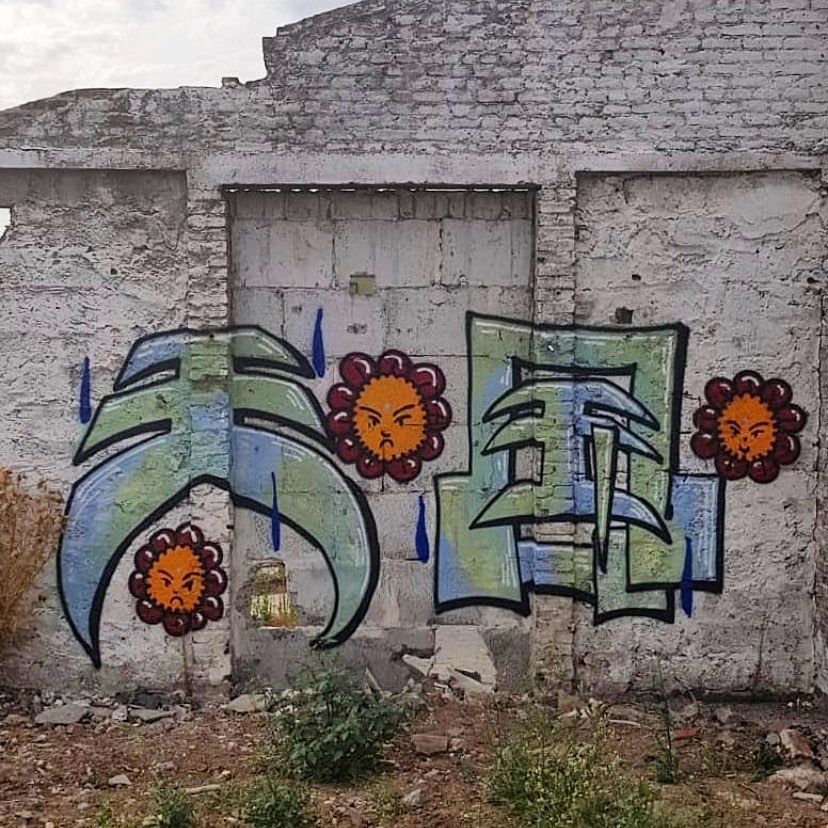

Chan13, a writer from Guangzhou, is quite the opposite. Although he’s fond of catching tags and throwies, he only promotes his large production work, which is impressive in detail and scale. As an architecture student, he views his graffiti in terms of design and mapping, resulting in letters plotted like buildings on a street grid. “Chinese characters are quarter-bounded and each character has its own discipline within these boundaries; its own outlook, shape, and structure,” he explains. “I try to reflect the city I’m painting from a bird’s view. The demands of the modern city are the same in the West and East but there are also differences, so I try to illustrate this through small adaptations in the font I’m creating or color schemes.”
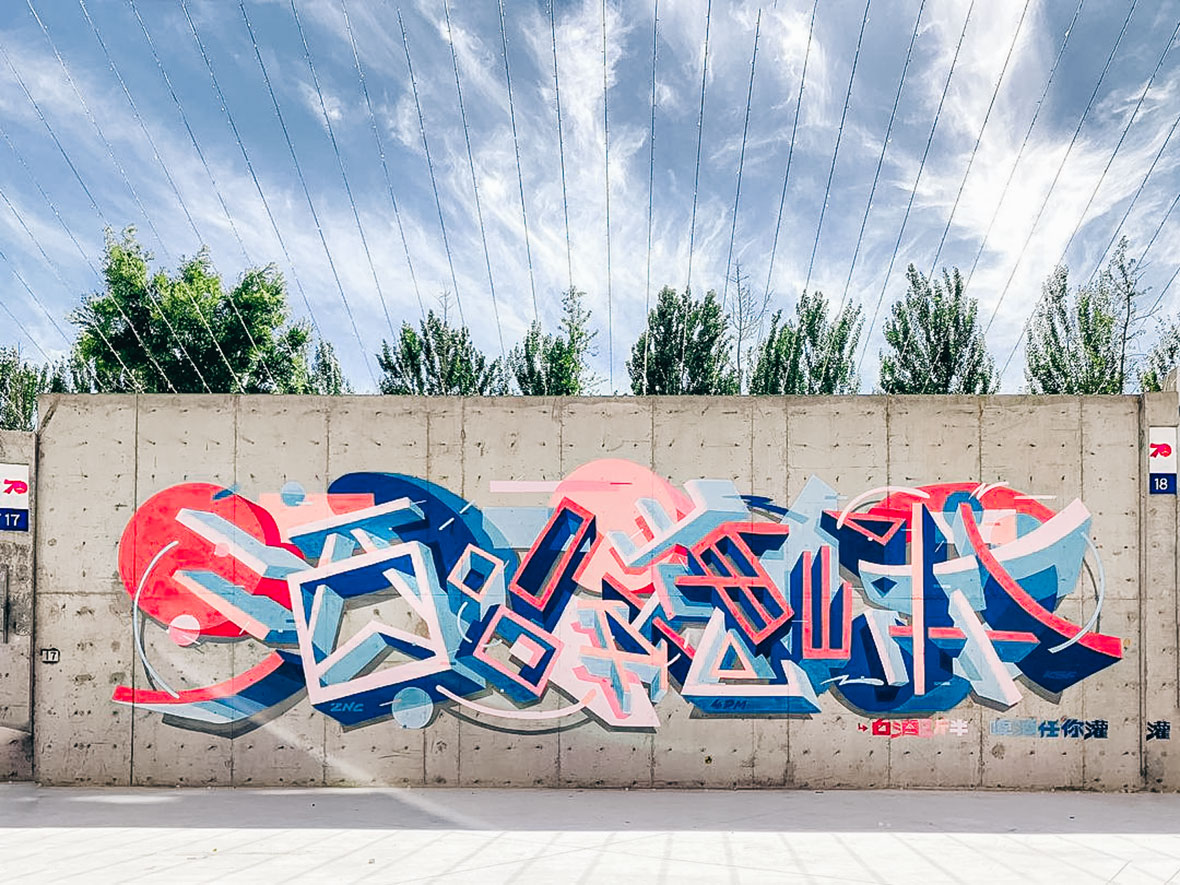
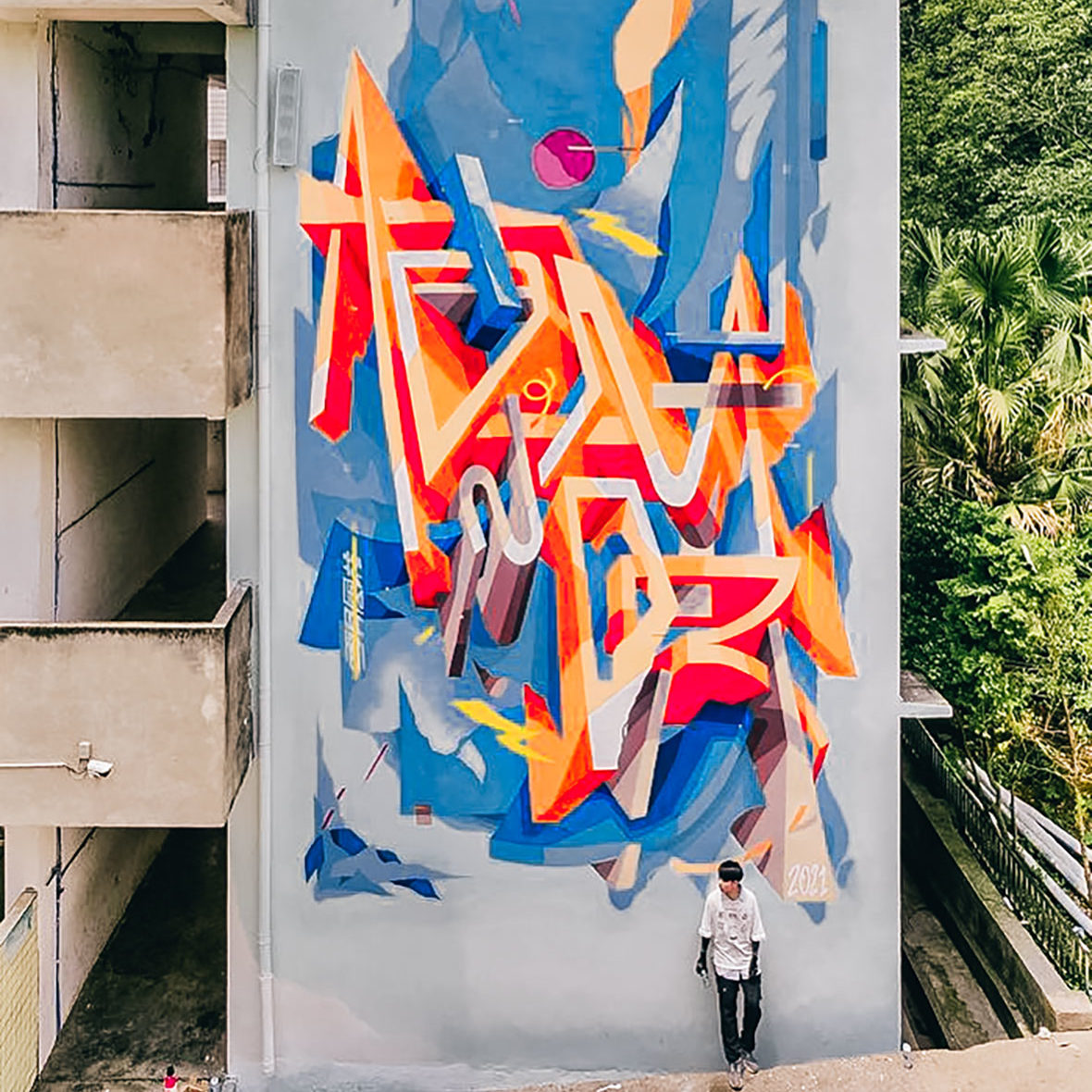

Growing up, Chan13 was first exposed to graffiti on his walks to and from school: “We had some of the earliest practitioners of graffiti in China, starting in the ’90s. I don’t know who they were but we can still see their works.” They wrote words like “soul” and “hip hop,” using brushes for tags, throw ups, and type-oriented murals. “In 2008 I got really into vandalism,” he laughs. “I got caught carrying spray paint to school with me. After a while I realized certain places make it easy to get caught, so I focused on spots that won’t make anybody unhappy.” He says plenty of writers still bomb there today.
“In 2013 I started to wonder why I was writing in English when I’m Chinese,” he recalls. “It would be constructive to use something from my own culture. Graffiti is supposed to be non-elitist and decentralized. If there was a fixed form for what it was supposed to be it wouldn’t be true to its roots. I also enjoy it more and I’m familiar with it. It’s generous to share it with others and I wanted to gain an audience. I wanted people to understand what I was doing, to consider it art.” He says he was inspired to switch by his crewmate Touch as well as Gas from Chengdu.
But switching to such a different form of written language was like starting from scratch. “By deconstructing the existing view of graffiti, I needed to reconstruct a new discipline for myself,” Chan13 says. “I had to destroy all my previous efforts in English language graffiti. It’s a little bit risky to start over, and it took me about three years to find my new style.”
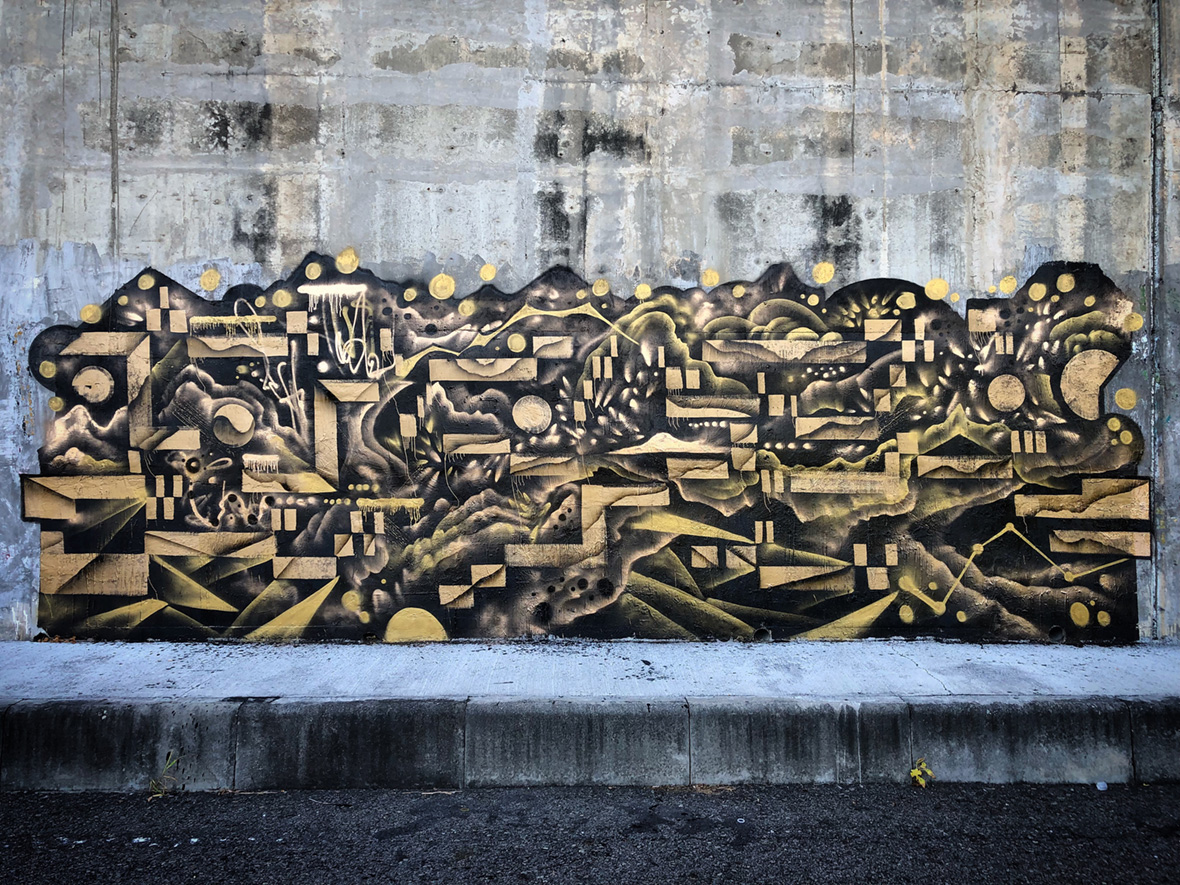
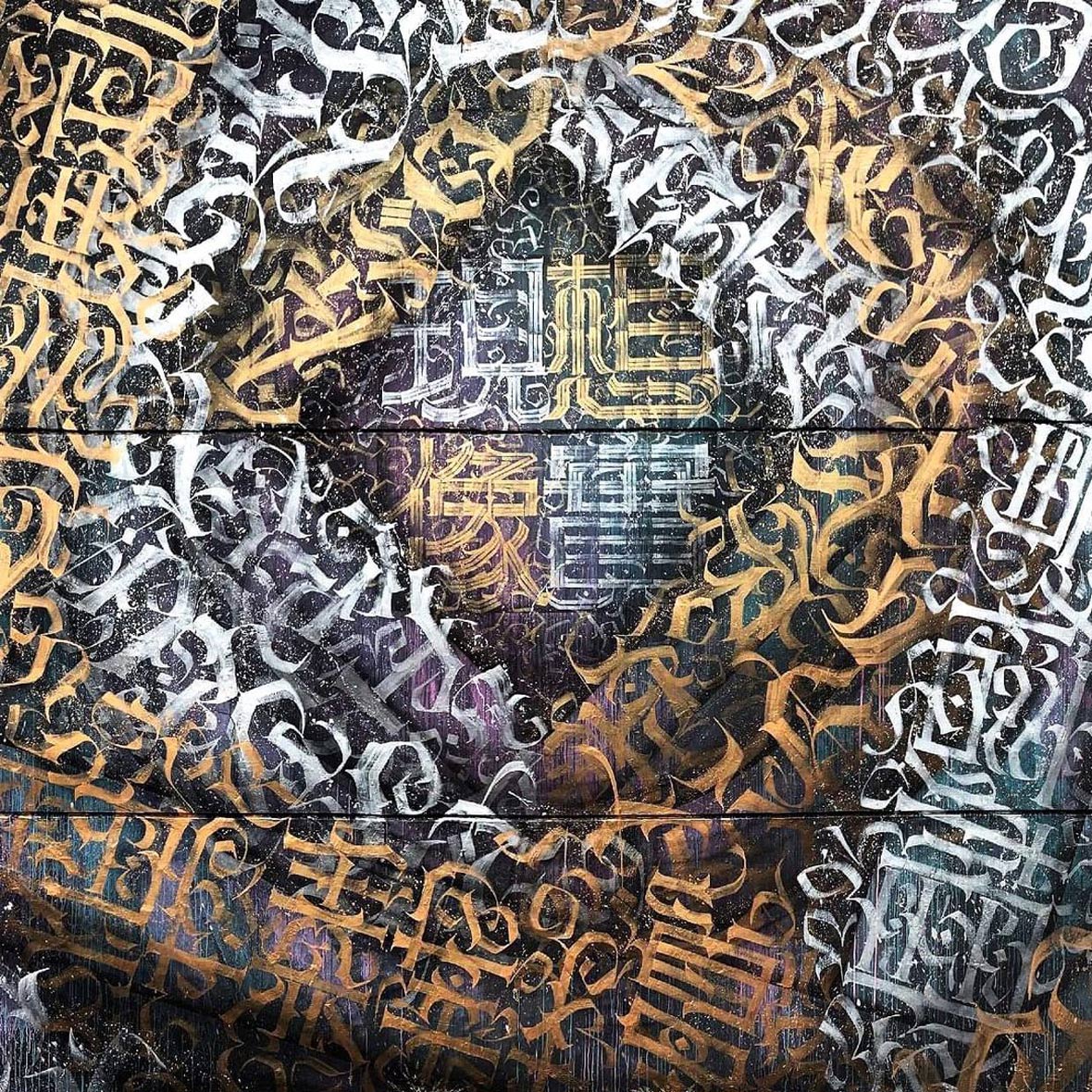
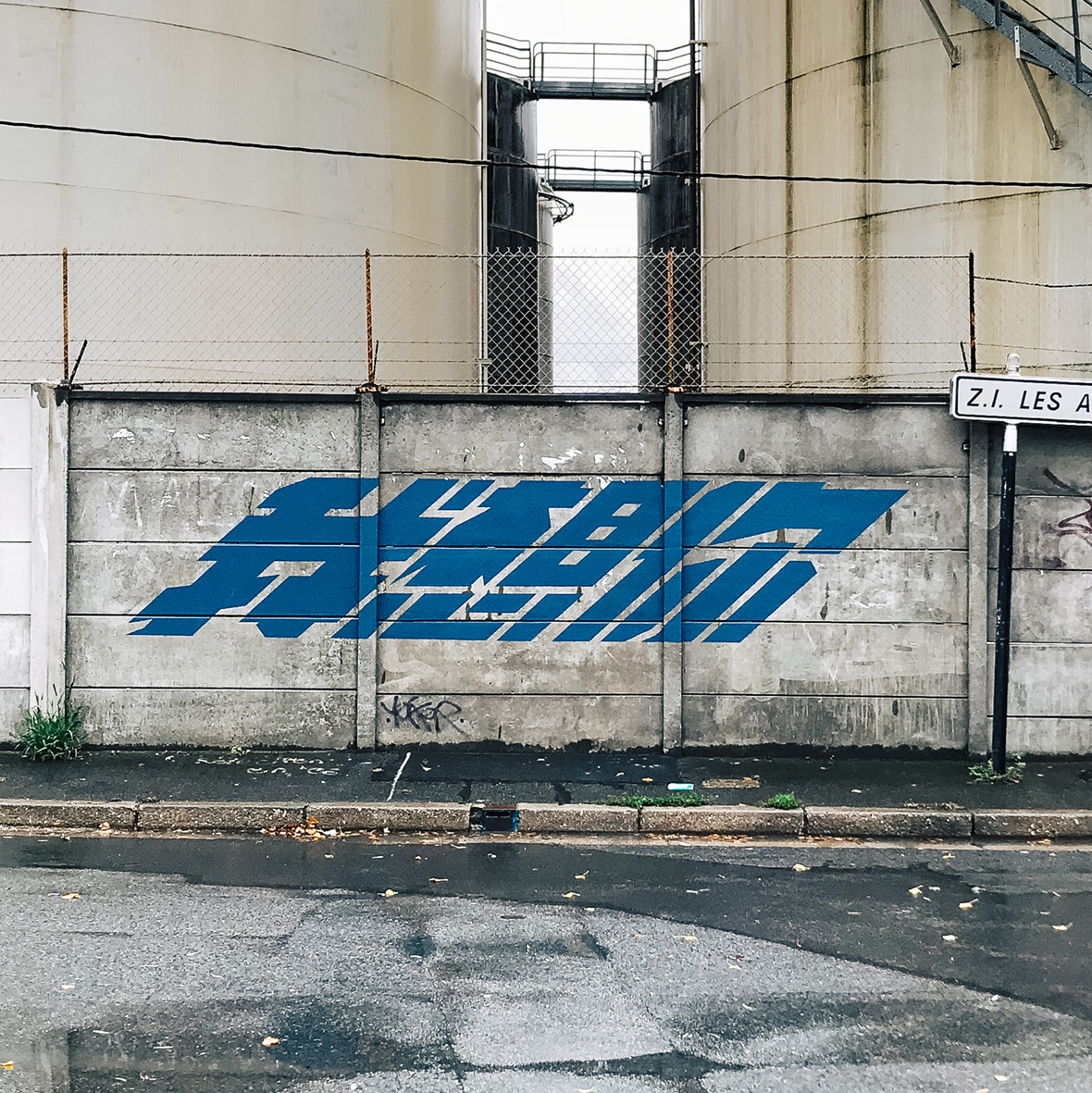
Chinese characters can be complicated too and if the wrong line is changed, it can alter its meaning entirely. Artists like Tacos, a French writer who partially grew up in Shanghai, say he paints in a very simple style because of this fact. And Blackzao, a writer in Taiwan who bombs in English, says this is why he only writes in Chinese when doing calligraphy. CreepyMouse is another Taiwanese graffiti writer using Chinese text, but he focuses on calligraffiti, which alters characters in distinctly different ways.
Exas, a writer from Beijing, also found the transition of languages challenging: “Chinese characters take more time to write and it’s hard to develop a cool style because you can’t bite no one.” He started writing graffiti while in high school around 2005 but says he was a “toy” (graffiti slang for a novice) then, only imitating the work of European writers. MC Yan was finding some attention in magazines at the time and was the only writer that Exas had seen using Chinese, but it wasn’t until 2012 that he decided to focus on working in Chinese himself. He was inspired by his crewmate, Funk, and began looking into Chinese characters that resembled his English name, which is how he came up with his Chinese nickname, líng dān (灵丹), which translates into “panacea.” “The first character of Panacea means ‘soul,’ so we appeared on the streets as funk and soul together,” he explains. Exas’s original crew is BJPZ, a group of OG Beijing writers, and he says they all write in Chinese, but that it’s mostly commercial work, more like design than true graffiti.
His lettering in Chinese resembles a traditional simple style, with straight lines and rounded edges. It closely resembles the Chinese Cai Yun font, although that’s unintentional. “I didn’t even realize that! I guess it happened because it’s simple enough to paint and has that fat throw-up look.” It fits his preference for bombing over legal work. “Graffiti has to appear in people’s daily life, in the urban environment, not just in an art district or on shopping mall walls,” he says. “It’s almost over now because of work being buffed overnight. Beijing had a time where people came from all over the world to paint, even the subways got painted. In 2008, the government was promoting graffiti, they saw it as urban decoration. But not anymore.”
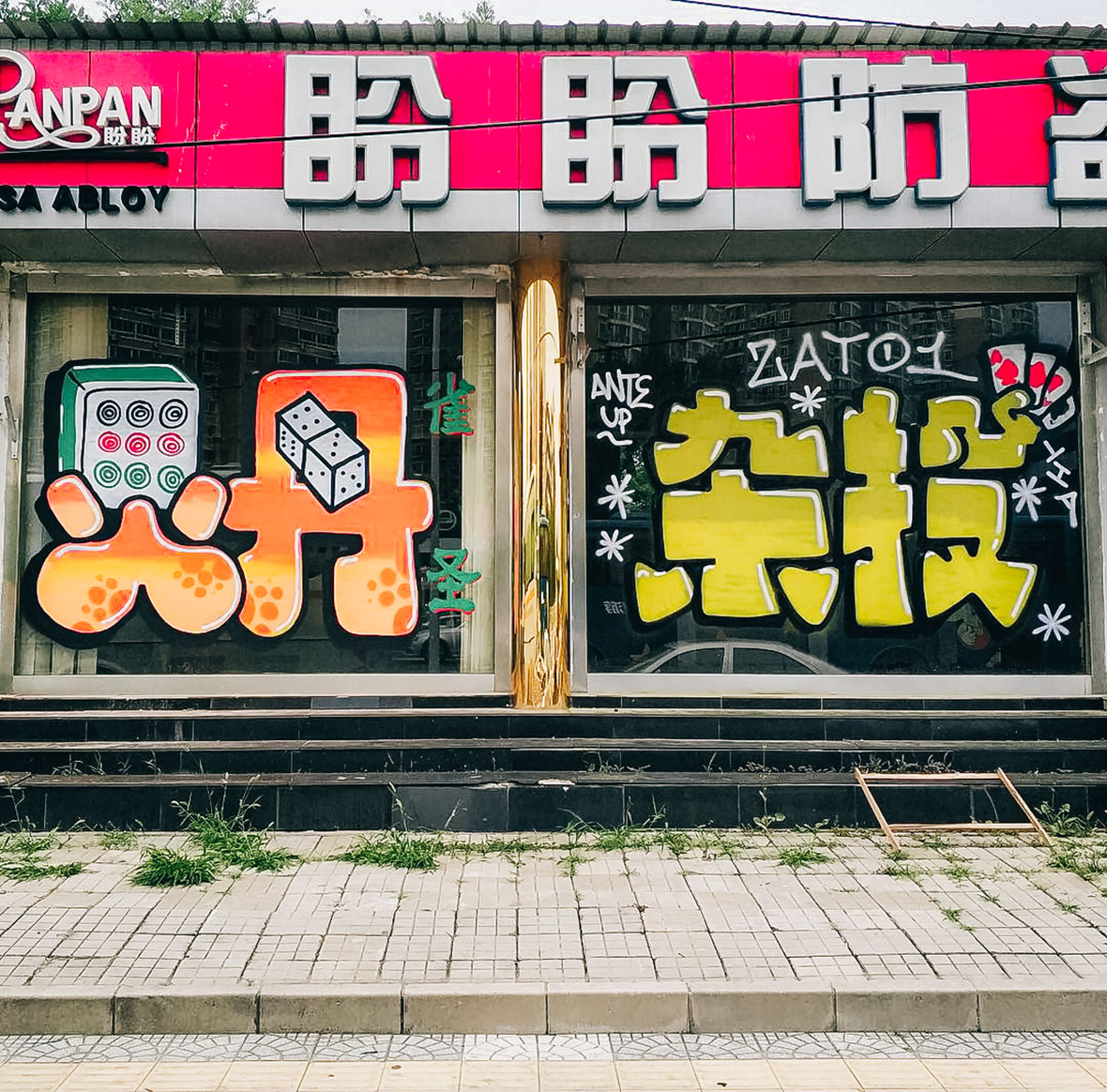
In Hong Kong, it’s more common for writers to paint sewer tunnels and abandoned buildings or to paint trucks and street gates under the cover of night than it is to paint permission spots. “I’d never reject a legal wall, who’d say ‘no’ to a beautiful, sexy virgin wall right?” Hong Kong-based writer Boms laughs. “But it’s hard to find legal spots here. Also, exploring the city is fascinating, every time it’s a new adventure.”
Boms started writing in 2014 as an extension of his interest in breakdancing. But he was working an exhausting job as a designer in an online marketing agency, often slugging away at 12 hour to 15 hour shifts. In 2017, he finally quit and became an artist full time and this is also when he started to find his footing in graffiti. His tag is in English but his pieces are in Chinese, and his style is loose and cartoony, with letters that seem to bounce around with energy. Sometimes, as a way of blowing off steam, he’ll write curse words and lewd slang instead of his alias.
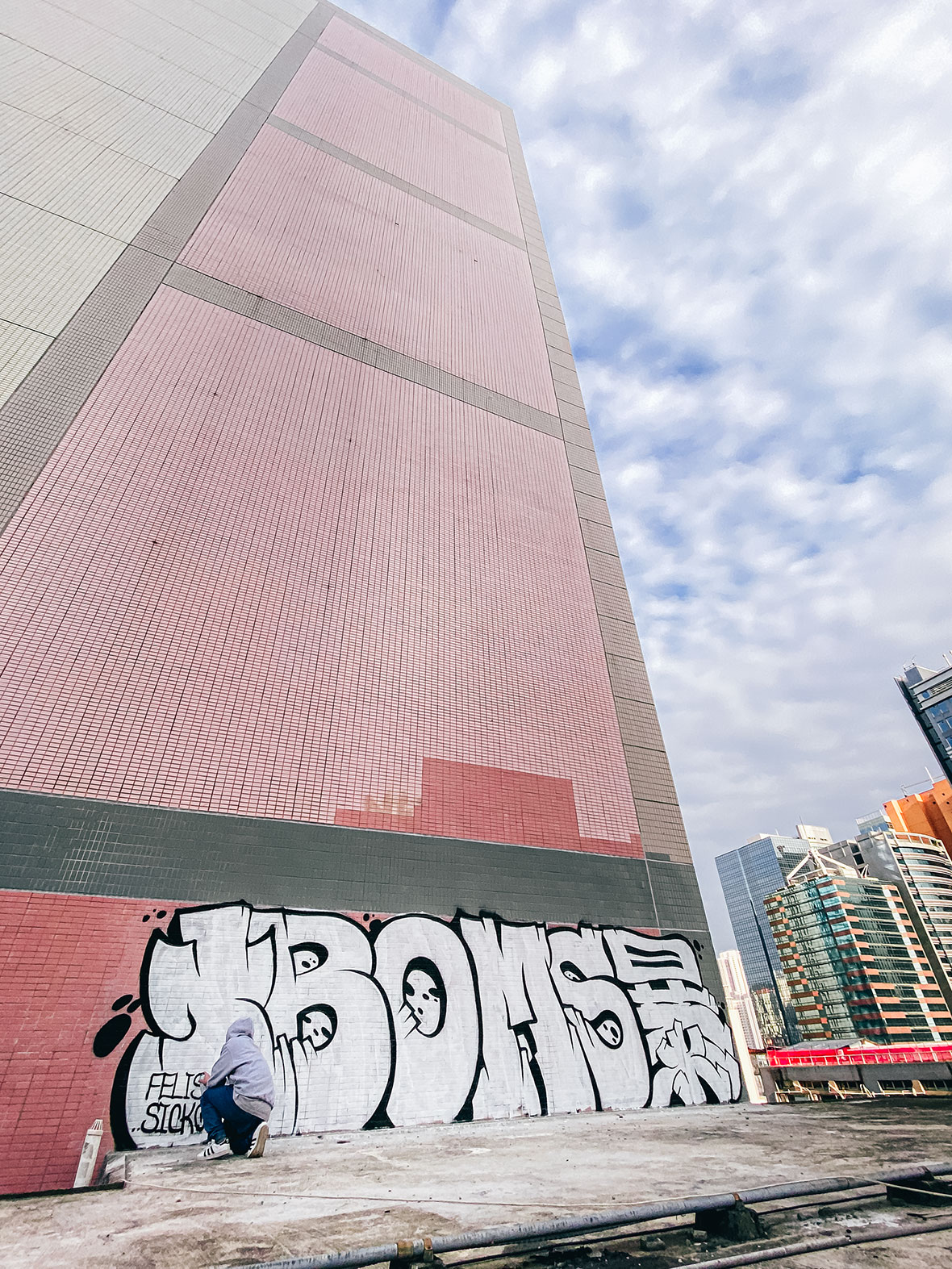
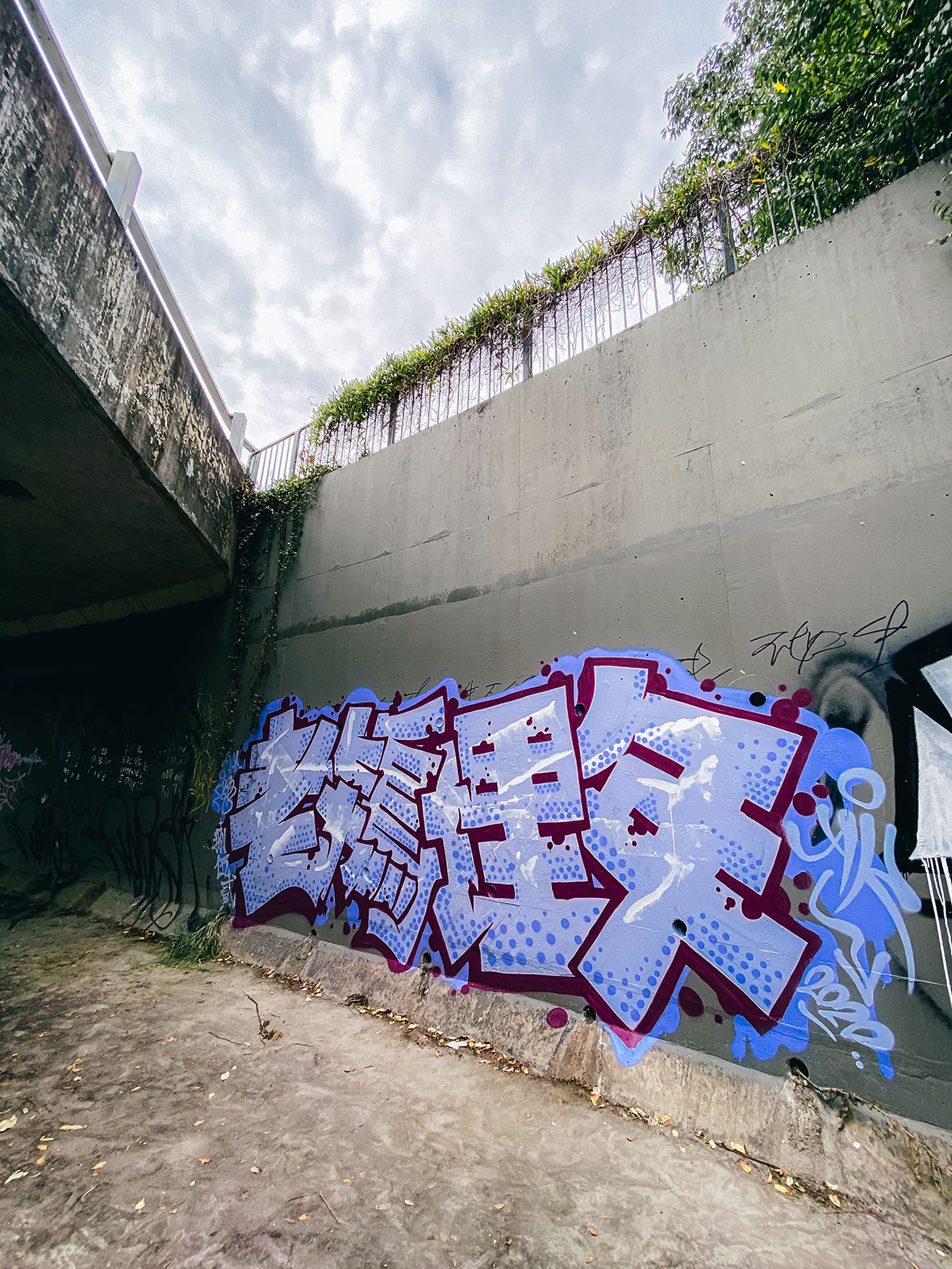
Many writers have found that writing in Chinese characters make their pieces stand out, regardless of where they paint. “When I lived in New York, I wrote in both English and Chinese, but nobody noticed my English pieces,” Exas says. “It was like they just disappeared. But the graffiti photographers spotted my Panacea pieces. When you represent your culture it makes you unique.”
This is true within Chinese speaking countries, too: “Chinese characters speak more to Chinese audiences, since they can read them and concentrate on their meaning,” SinoGhetto explain. “It’s much more fun to communicate with your audience, because people in the city really care about what you are writing. You can make them laugh, feel sad or angry or whatever. We switch between various languages based on where we live. For example if someone from our team moves to Germany or Mexico they will surely come up with something new based on their surroundings and life experience.”



“There’s such a small amount of Chinese graffiti in Taiwan that when you see it, it makes it special,” adds Candy Lien, a street artist from Taipei City. As a designer before she was using spray paint, she also applies her graffiti letters to other forms of art, like nail art and package design. And when she paints walls, she prefers to write phrases rather than her name. “Chinese is my mother language; I speak Chinese every day,” she explains of her decision to incorporate Chinese.
Chan13 also prefers to write phrases like “Better taste than regret” or “To be either intellectual or individual.” He only writes his name in his productions once a year. A recent piece that reads “Serendipity” provided an interesting example of the challenges of translation. “It was painted in Boston, so a lot of people asked me to explain it,” he says. “Sometimes I can’t find equal English phrases to express Chinese idioms. “Serendipity” in Chinese is an idiom referring to one feather of a unicorn. In China they don’t have a horn, but have feathers instead. It represents a certain type of luck, a curious opportunity of finding small, beautiful treasures in life.”
In addition to the practical fact that this is the language he grew up with and studied since he was a child, Chan13 sees a philosophical reason for writing in Chinese as well: “Life is hard, right? When you do graffiti and have to follow rules, it makes life harder. Graffiti is supposed to be non-elitist and decentralized. If there was a fixed form for what it was supposed to be, it wouldn’t be true to its roots.”
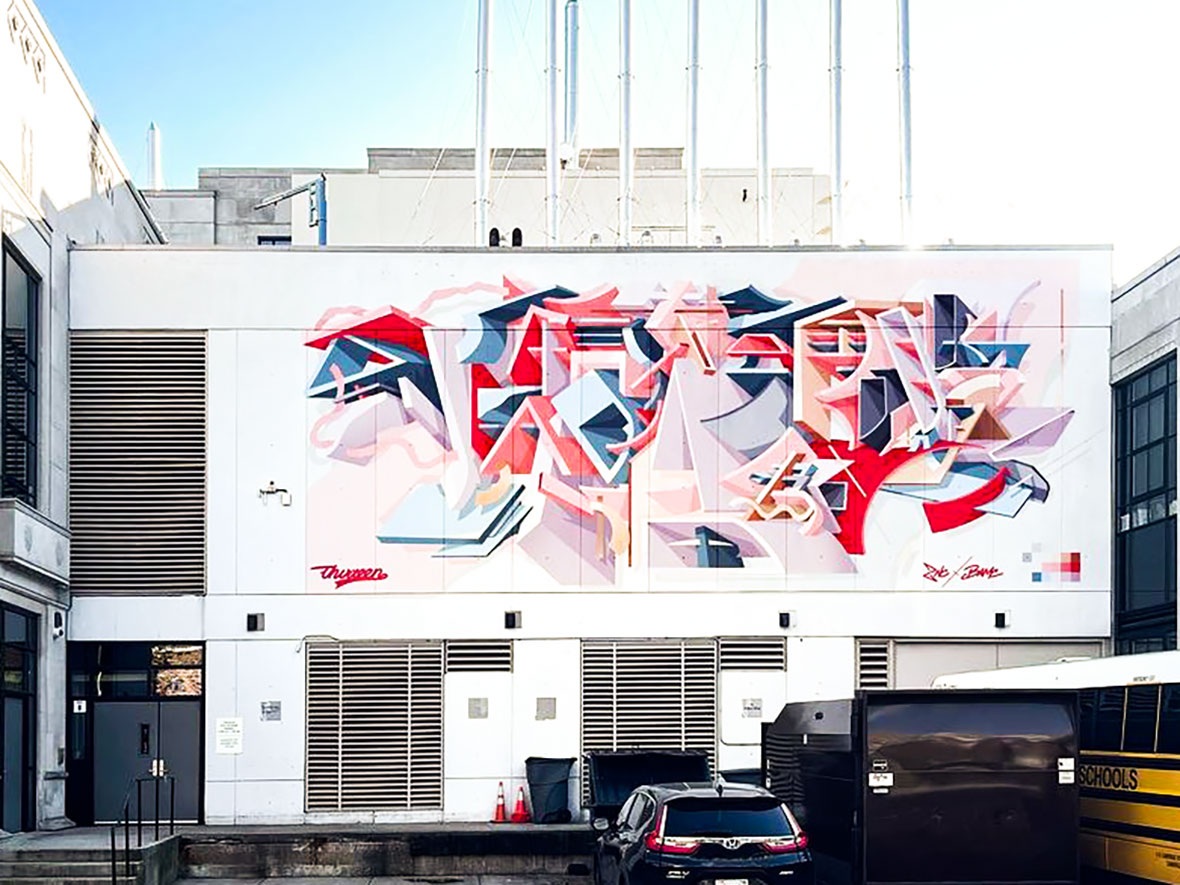
During the Black Lives Matter protests in 2020 after the death of George Floyd, Exas decided to start Yellow Peril. Alongside crew member Elvis, they had wanted to start a crew dedicated to supporting graffiti in Asian languages, and this seemed like a good moment. “Since I listen to rap music and consume other forms of Black culture, I wanted to do something to support them.” Yellow Peril was a xenophobic term used to refer to Asian immigrants that was coopted by activists during the 1960s civil rights movement and they were aligned with Black power movements like the Black Panthers.

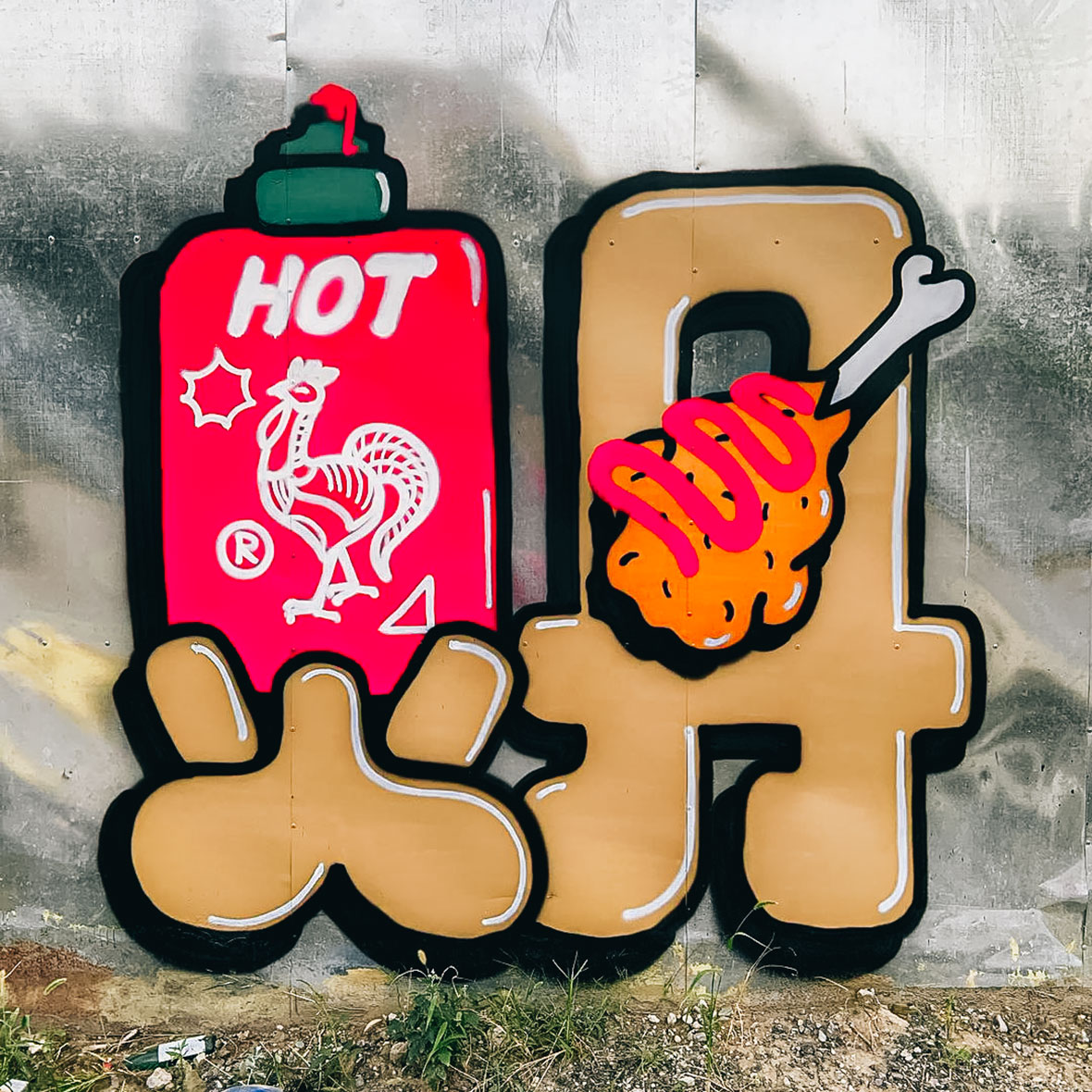
Given the different layers of cultural context, it proved difficult to communicate their meaning. “In China, if you write ‘yellow peril’ in Chinese and they search it, they get angry because they think you’re insulting them,” Exas admits. “It’s a derogatory term originally. I’ve gotten a lot of hate mail over it.” He also made T-shirts, but his European crewmates were uncomfortable wearing them because a white guy wearing a “yellow peril” shirt might seem racist. “So now I write YP, unless it’s in a more private place.”
After the wave of hate crimes against Asians in Western countries across the world, it took on an extra urgency. “I’m trying to say that if you’re Chinese or Asian, you don’t have to be afraid or ashamed, you can be proud,” he says, before ending with an apathetic note: “But graffiti can’t change shit.”
Like our the story? Follow Neocha on Facebook and Instagram.
Instagrams:
@yellow_peril_crew
@ghettosino
@gudiii
@reset_swg
@dohak625
@pasleparadis
@chanthirteen
@candylien1203
@boms_boming_here
Contributor: Mike Steyels
Chinese Translation: Young Yang
